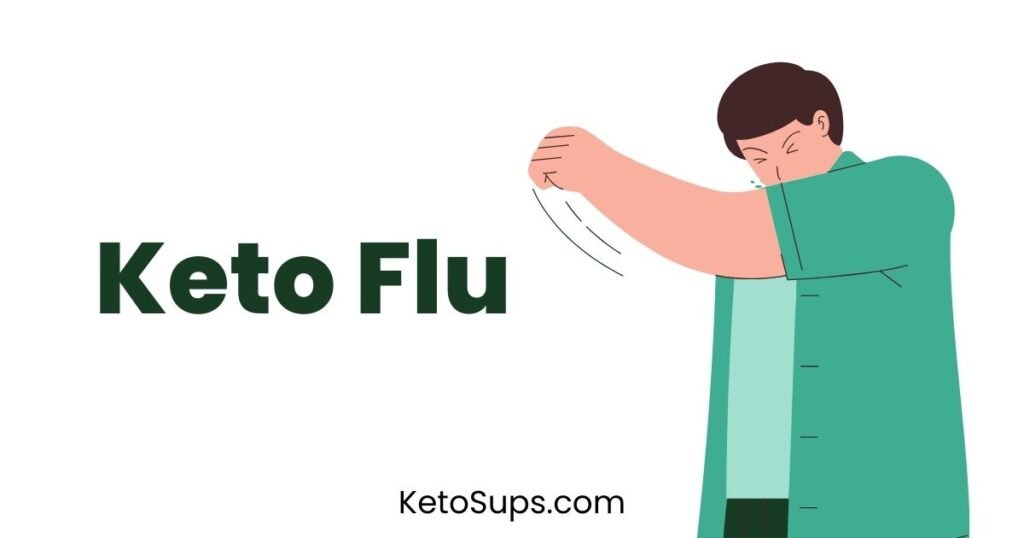Embarking on a ketogenic diet can lead to a phase commonly known as “keto flu,” where individuals may experience flu-like symptoms as their bodies adjust to the new way of eating. Understanding the causes and strategies to manage it is essential for a smoother transition into ketosis and reaping the benefits of a ketogenic lifestyle.

Table of Contents
What is Keto Flu and How Long Will I Have It?
Keto flu refers to a set of symptoms that some people experience during the initial days of starting a ketogenic diet. These symptoms can include headaches, lethargy, brain fog, irritability, and a general feeling of being unwell. The duration of keto flu varies from person to person, but it typically lasts for a few days to a week as the body adapts to using fat for fuel instead of carbohydrates.
Causes of Keto Flu
- Adjusting to Ketosis: Transitioning from using carbohydrates as the primary source of energy to utilizing fats for fuel can be a challenging process for the body. This adjustment period may lead to flu-like symptoms as the body shifts into ketosis.
- Carb Withdrawal: Sugar addiction is real, and drastically reducing carbohydrate intake can trigger withdrawal symptoms similar to those experienced when giving up other addictive substances. Gradually reducing carb intake or toughing out the cravings can help alleviate these symptoms.
- Electrolyte Deficiency: One of the most common reasons is an electrolyte imbalance. When entering ketosis, the body sheds excess water weight, along with essential electrolytes like sodium, potassium, and magnesium. Failing to replenish these electrolytes adequately can lead to symptoms of the flu.
Managing Keto Flu
- Stay Hydrated: Adequate hydration is crucial during the ketogenic diet to support electrolyte balance and overall well-being. Aim to drink plenty of water throughout the day to prevent dehydration and support your body’s adjustment to ketosis.
- Replenish Electrolytes: To combat electrolyte deficiency, consider incorporating electrolyte-rich foods like leafy greens, nuts, seeds, and avocados into your diet. Additionally, you may benefit from using electrolyte supplements or consuming bone broth to boost your electrolyte levels.
- Monitor Sodium Intake: Since those on a ketogenic diet require higher sodium intake, be mindful of adding salt to your meals or using electrolyte-enhanced products to ensure you are meeting your sodium needs.
- Gradual Transition: If you are prone to experiencing severe symptoms, consider gradually reducing your carbohydrate intake over a few days or weeks to ease the transition into ketosis and minimize the likelihood of experiencing flu-like symptoms.
- Bonus: Ketoade, also known as ketorade, is a homemade electrolyte drink that can help combat the symptoms of keto flu. It is a simple and effective way to replenish electrolytes and stay hydrated while on a ketogenic diet. The basic formula for ketoade includes Lite Salt (a salt substitute containing potassium), water, and zero-carb flavoring such as Mio brand or equivalent. Some individuals may choose to add magnesium and extra salt to their ketoade mixture based on their personal electrolyte needs. It’s important to remember that consuming too much potassium or sodium at once can be harmful, so it’s recommended to sip your ketoade slowly throughout the day to avoid overloading your system.
Conclusion
While keto flu can be a challenging phase for some individuals starting a ketogenic diet, understanding its causes and implementing strategies to manage symptoms can help alleviate discomfort and support a successful transition into ketosis. By staying hydrated, replenishing electrolytes, and gradually adjusting to a low-carb lifestyle, you can navigate through the phase with greater ease and set yourself up for long-term success on a ketogenic diet.